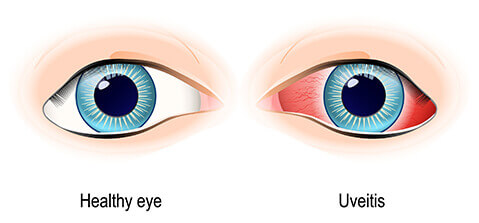
Uveitis describes a host of diseases that cause inflammation of the eye. The term comes from the word uvea (which refers to a layer inside the eye that includes the Iris, ciliary body, and choroid) and the root, “itis,” which means inflammation. Uveitis can include inflammation of all parts of the uvea, or only part of it. Common symptoms of uveitis include eye redness, eye pain, light sensitivity (photophobia) and blurry vision.
Uveitis is a serious condition that needs careful medical therapy in order to prevent serious complications, such as vision loss from glaucoma, cataract, and/or macular edema. Uveitis can usually be treated and put into remission, but is often not “curable” permanently. Steroid drops, pills, or injections are usually the first line of treatment for uveitis; however, stronger disease-modifying immunosuppressive medicines are often needed as well. These medicines include conventional drugs such as methotrexate, mycophenolate, and cyclosporine or biologics such as adalimumab or infliximab. These immunosuppressive medicines are commonly used in other rheumatologic autoimmune diseases such as rheumatoid arthritis or psoriasis.
http://www.aao.org/eye-health/diseases/what-is-uveitis